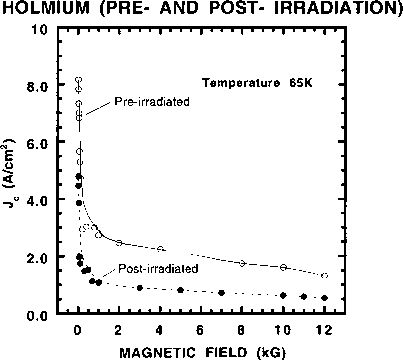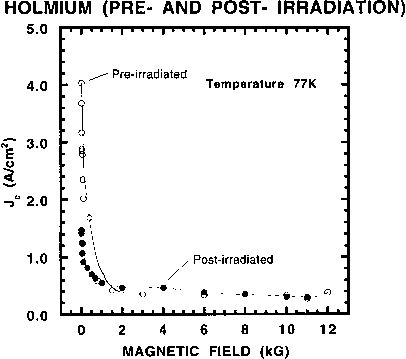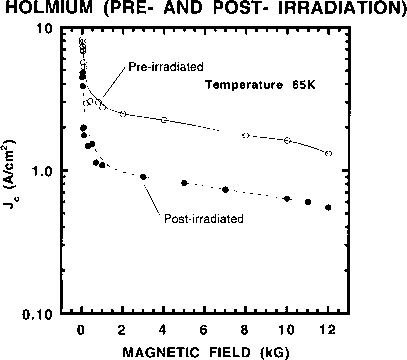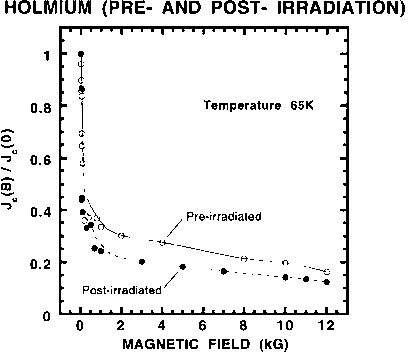|
Effects of Neutron Irradiation on
In-field |
|
When the Holmium sample displays the incomplete Meissner effect, threads of flux lines penetrate the sample. When a current is applied, these flux vortices begin to move due to a Lorentz force. This in turn produces a resistance. By producing defects in the sample, these flux vortices can be pinned down. Therefore, as long as the flux pinning force exceeds the Lorentz force, the Holmium sample will remain in a state of zero resistance. The Holmium sample was placed in a 1 Curie Americium - Beryllium source for two weeks to produce defects in its lattice structure. Measurements of the control sample were done both before and after the irradiation process to insure that any changes found were due to the irradiation process. |
|
Data taken with our first
HoBa2Cu3O7-x sample. |
|
Type of Scale Used on Graph |
Temperature at Which Data was Taken |
|
|
65K |
77K |
|
|
Typical Scale: Critical Current Density (Jc) measured in Amps/cm2 Versus Magnetic Field measured in Gauss. |
 |
 |
|
Log Scale: The same data is plotted on a logarithmic scale so that differences are easier to locate. |
 |
 |
|
Normalized Scale: Values of Jc(B) are divided by Jc(0) so that the effect on field dependence can be seen clearly. |
 |
 |
|
Plot of Resistivity (MicroOhm-cm) Versus Temperature (Kelvin) |
 |
|